kuchinoerabu
The Monument of Matsuda Shinshirō
- Modification: 2024/01/11
- Area: kuchinoerabu
in 1857 (Ansei 4), The Satsuma Domain imposed the trade of sugar-making on Kuchinoerabu Island. However, the village headman, Matsuda Shinshirō, along with two other individuals, opposed this measure. In an effort to protect the island’s way of life, they attempted to thwart the Clan’s efforts—and were subsequently caught and sentenced to caning. While his compatriots perished, Matsuda survived, despite heavy injuries. Their efforts proved fruitful, however. With this incident, sugar-making on the island ceased, and the fiasco came to be known as Hakutōgata Kuzure, or the Downfall of the Sugar People (referencing the Satsuma Domain), in the local histories.
With the onset of the Meiji Restoration in 1868, Matsuda carried on the spirit of his deceased comrades, and constantly worked for the betterment of the island even in a state of destitution without pay. In exchange for the use of Kuchierabu Island as the base of operations for the katsuo fishing fleet of Makurazaki, Matsuda negotiated and established a tax system for using the island’s harbours. With this income, the island was able to bolster its infrastructure. Matsuda also helped to facilitate forestry on the island, and devoted his entire life to the betterment of Kuchinoerabu Island.
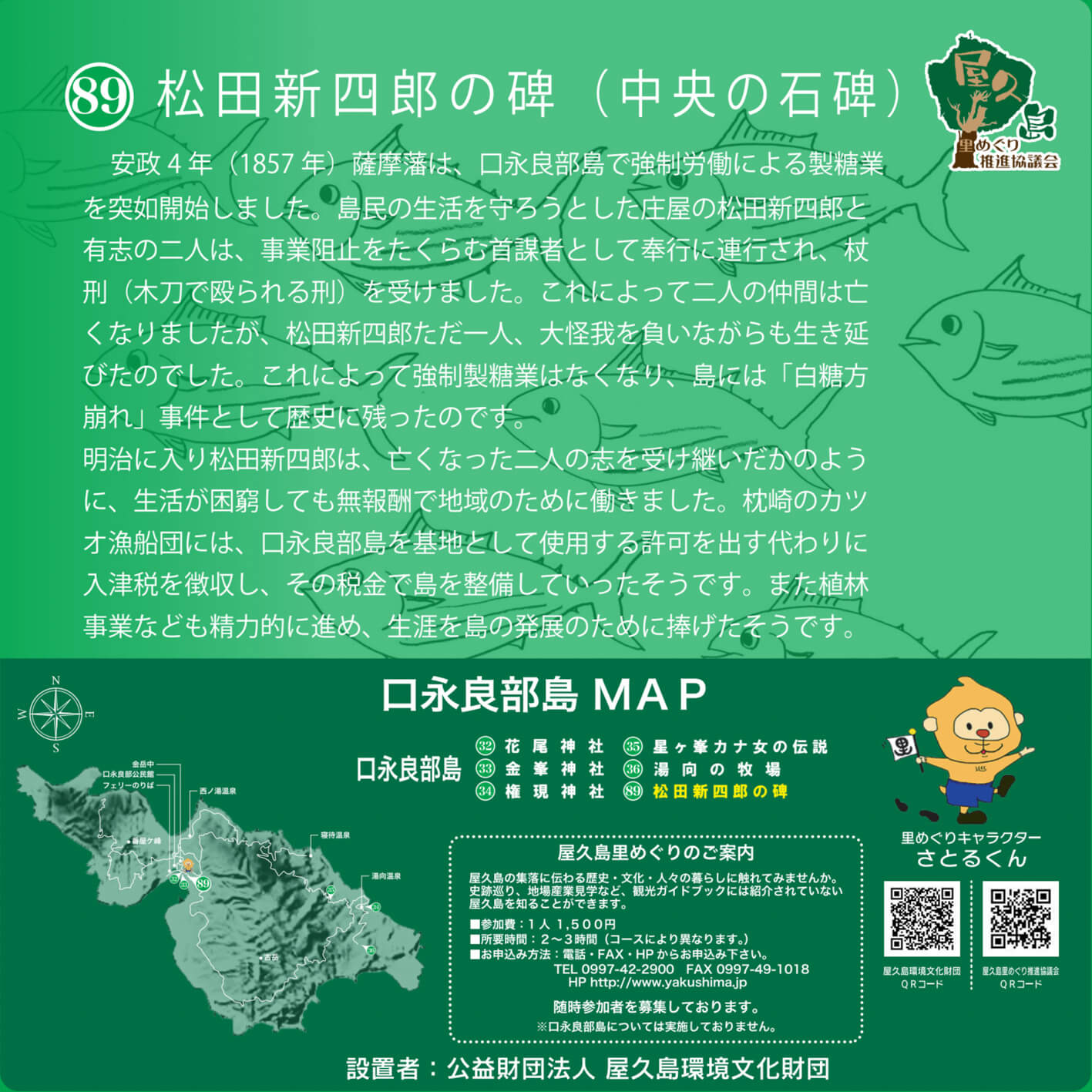
Yumugi Ranch
- Modification: 2024/01/11
- Area: kuchinoerabu
Nowadays, this municipal reach is used for the rearing of beef cattle. For a time during the Meiji era (1883–1889), however, it was used to raise sheep.
At the time, it was thought that a great profit could be found selling wool to the military. Thus, in January of 1883 (Meiji 16), 44 island residents opened the Yumugi Sheep Ranch. That same year, 175 sheep and a total of 8,000 yen was lent to the ranch by the Meiji government (160 million yen, or about 1.5 million USD in today’s money (as of 2022)).
The first year of its operation, one wool pelt could be sold for 180 yen. Two years later, the sheep flock had grown to 570 animals. Another year after that, in 1886, one wool pelt fetched a price of 219 yen, and the flock had reached 750 animals. While the farm made a killing selling wool, the difficulties of doing so from this small isolated island started to pile up. Add together the costs of the sheep’s feed, the costs of shipping them by boat to the mainland, and the damages from typhoons, and the farm’s operation began to take an economical hit.
The farm owners found that they could no longer bear the burden of the sheep farm, and in a final act of desperation tried to move their operations to the Anbo area on Yakushima. When that too failed, they sold the land to the municipality, and in 1889 (Meiji 22), the farm closed.
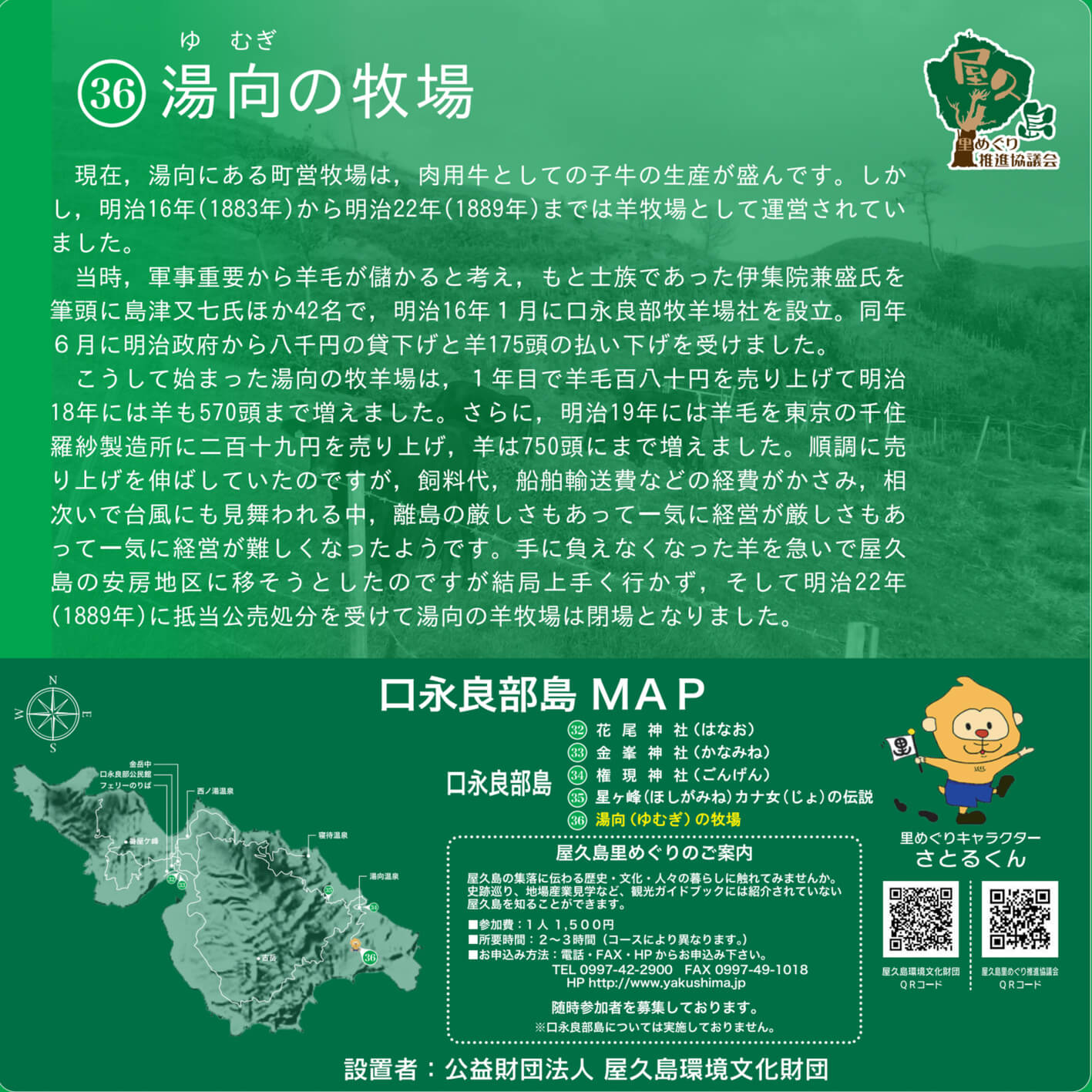
The Legend of Lady Kana of Star Cape (Hoshigamine Kanajo)
- Modification: 2024/01/11
- Area: kuchinoerabu
This is the tale of the daughter of a samurai family who lived in Honmura, and a Buddhist monk who lived in Yumugi. After these two first met each other in Yumugi, they eventually fell in love. Lady Kana began to visit Yumugi from time to time in order to meet her lover in secret. Before long, her brother caught wind of these trysts—he told her to break it off, so as to protect the honour of their family’s name. But she didn’t listen, continuing to meet the priest in secret.
Eventually, she bore the monk’s child. Her brother was beside himself with rage, and could not forgive her for this trespass. One day, as Lady Kana was walking to Yumugi to meet with the monk, her brother ambushed her at Star Cape. He slashed at her with his terrible sword. Her body, still holding her baby, fell to the bottom of the ravine. Her head went flying, getting caught in the branches of a lone pine tree. It is said that her head was hanging by her hair, her face set in an expression of tremendous sadness.
Since that incident, people often hear the sound of a crying child coming from the depths of this ravine. This area is still known to this day as “Lone Pine”.
Perhaps the spirit of Kanajo and her tragic love lives on here: couples with mysterious experiences are more than uncommon here in Yumugi, and this village is said to be “the land of hidden love”.
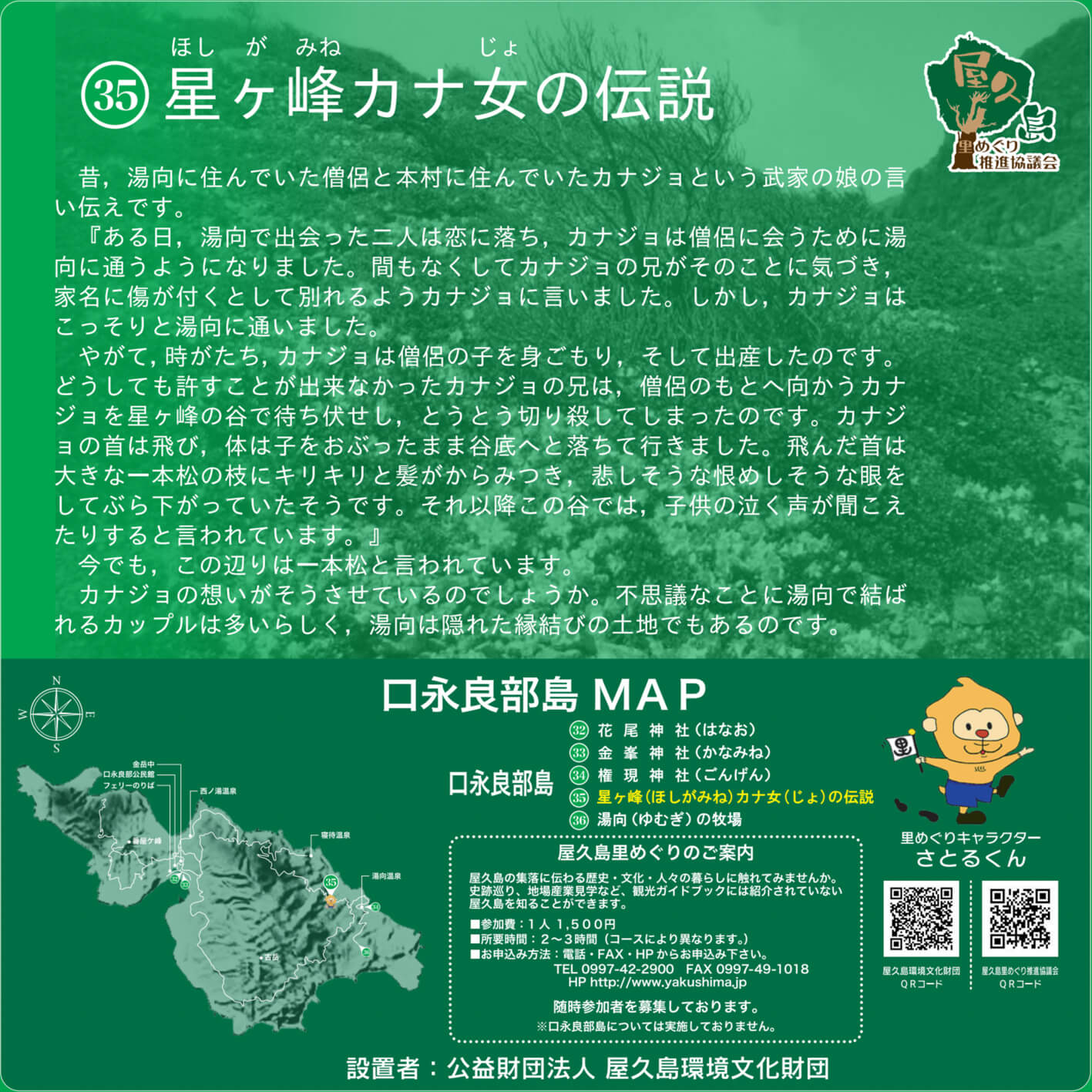
Gongen Shrine
- Modification: 2024/01/11
- Area: kuchinoerabu
The exact dates of this shrine’s origin are unknown, but it is thought that it was constructed during the Edo period. The deity enshrined here is Shiroi Niwatori, or the White Chicken—who is god of the nearby Yumugi hot spring.
It is said that ages and ages ago, two deer hunters out on an expedition got caught in a drizzling rain. Amidst the mist and fog, a number of white chickens materialised out of the air. They didn’t seem bothered by the hunters’ presence—rather, they continued to peck at the ground in peace and calm. As the hunters approached the chickens, they noticed the air around their legs and ankles growing warmer and warmer. In a second, the birds vanished—and in the clearing rain, the hunters saw before them a thermal spring bubbling with white water. In secret, they constructed a hot spring here, enjoyed only by a few individuals. But eventually, word got out of the tremendously healing and powerful spring, and it became property of the entire island community. From then on, the spirit of the White Chicken was venerated with this shrine, and then celebrated each year with a long and raucous night of drinking, singing, and festivities.
Aside from this version of the tale, however, there too exist several others: that the individuals from the story weren’t out hunting, but rather went to their field to farm; that the deer hunting was done with either bows and arrows or a matchlock firearm; that it wasn’t chickens but rather young women… In any case, legends about the hot spring’s name, too, exist in abundance. The most likely is that since people began to use this hot spring for their own use, they “faced” the “hot water”, hence the name Yumugi, which directly translates to “direction of the hot water”.
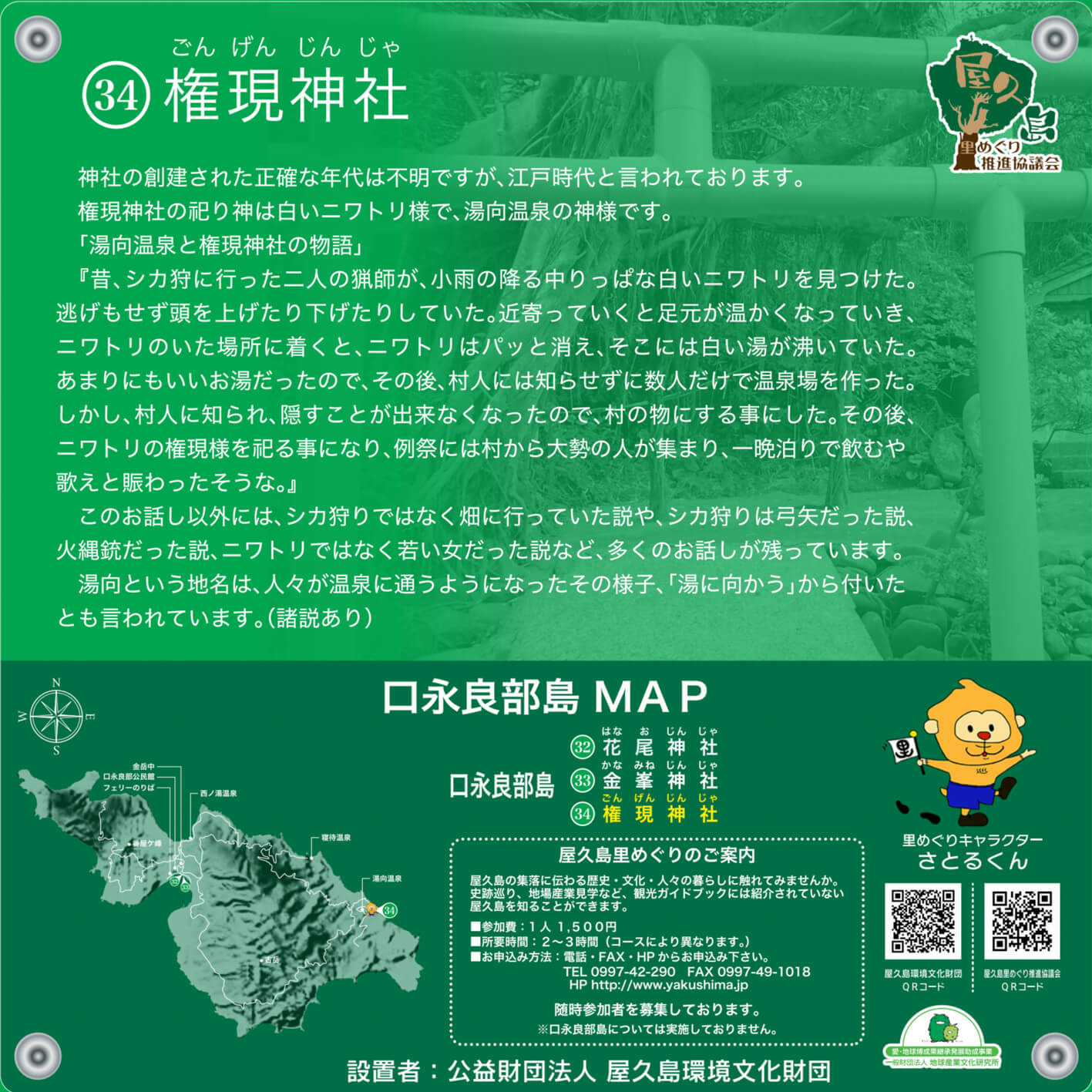
Kanamine Shrine
- Modification: 2024/01/11
- Area: kuchinoerabu
It is unknown when this shrine was constructed. However, records exist indicating that in 1888 (Meiji 21), the regional Shintō Association based at Kirishima Shrine undertook a systematisation project to organise all shrines within Kagoshima Prefecture. The shrines on Kuchinoerabu Island signed onto this agreement, with contracts from the time preserved to the present day. It was at this time that this shrine’s name changed from Kingoku Shrine to Kanamine Shrine.
The sacred object housed in this shrine is a natural stone from the island’s coast, but snakes are also considered to be sacred manifestations of this shrine.
The deities enshrined here are the pair Kanayamahiko no mikoto and Kanayamahime no mikoto. Each year on the 3rd day of the 4th month and the 15th day of the 6th day of the Japanese lunisolar calendar, a festival is held at the shrine to commemorate the two eruptions of Mt. Shindake that occurred in 1841 (Tenpō 12). On anniversary of the first eruption, the festival once consisted of community-wide sumō wrestling and dancing—but these customs were unfortunately lost around the middle of the Shōwa era (around the 1950s). These days, the festival commemorating the anniversary of the second eruption prominently features the traditional bō odori (“stick dance”) and hinomoto odori (“dance of the sun”).
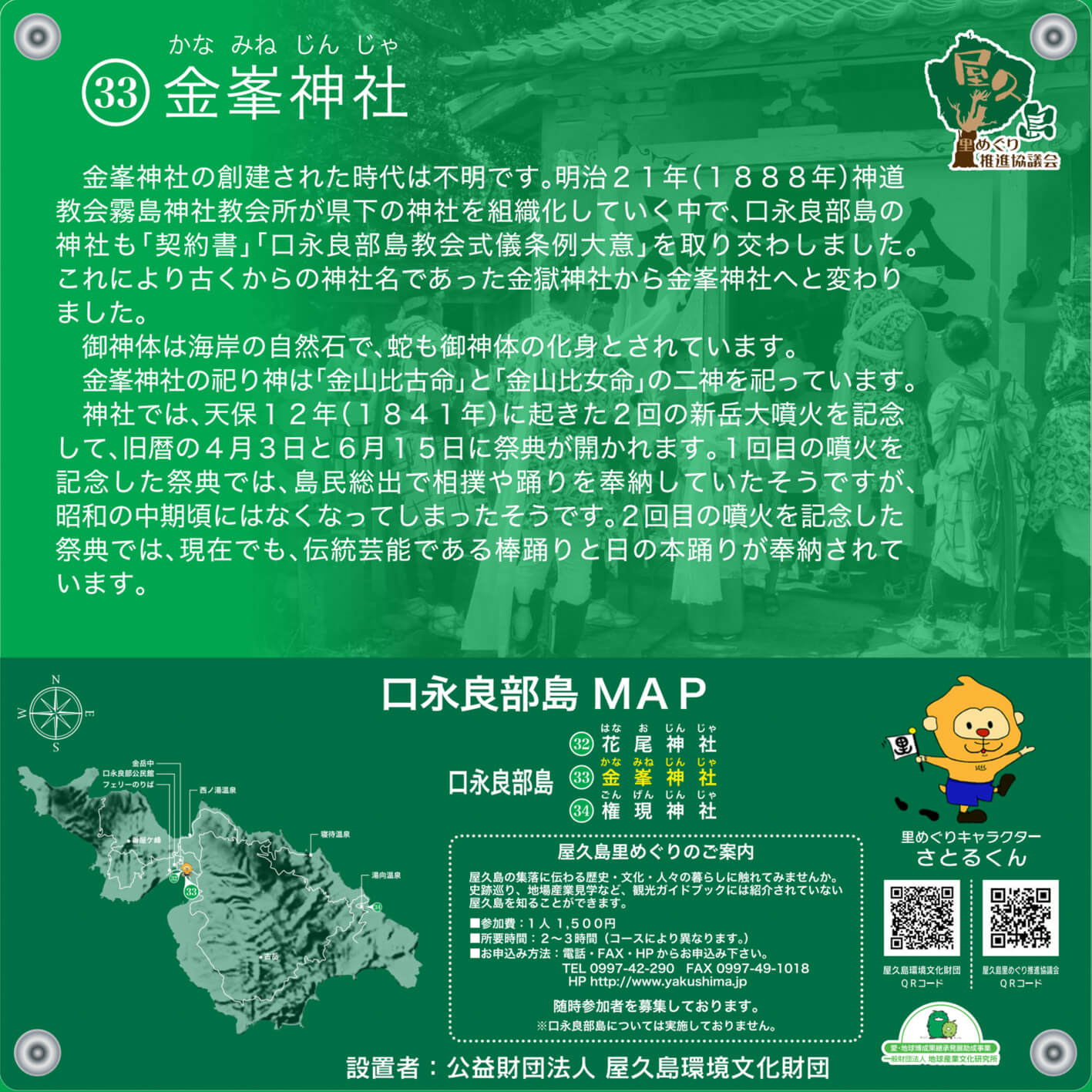
Hanao Shrine
- Modification: 2024/01/10
- Area: kuchinoerabu
Enshrined here are a trinity of deified figures—Tango no Tsubone (mother of Shimazu Tadahisa, who was son of Minatomo no Yoritomo and founder of the Shimazu Clan), Kamakura Shōgun Minamoto Yoritomo, and Eikin Ajari—who preside over the realm of childbirth.
The patron shrine of this one is Sasshū Mitsukein Atsuchi Hanaoyama, which is in present-day Kōriyama Town on the Kagoshima mainland, and was founded in 1218 (Kenpō 6).
During the Tenwa era (1681–1683 CE), the 19th clan head, Shimazu Mitsuhisa, constructed shrines in each region of the clan’s domain. At that time, Kuchinoerabu Island was part of the clan’s territory—as such, it is thought that this shrine was most likely built at that time.
This shrine once stood much closer to the water, at the island’s coastline. However, it was moved to its present location in 1910 (Meiji 43).
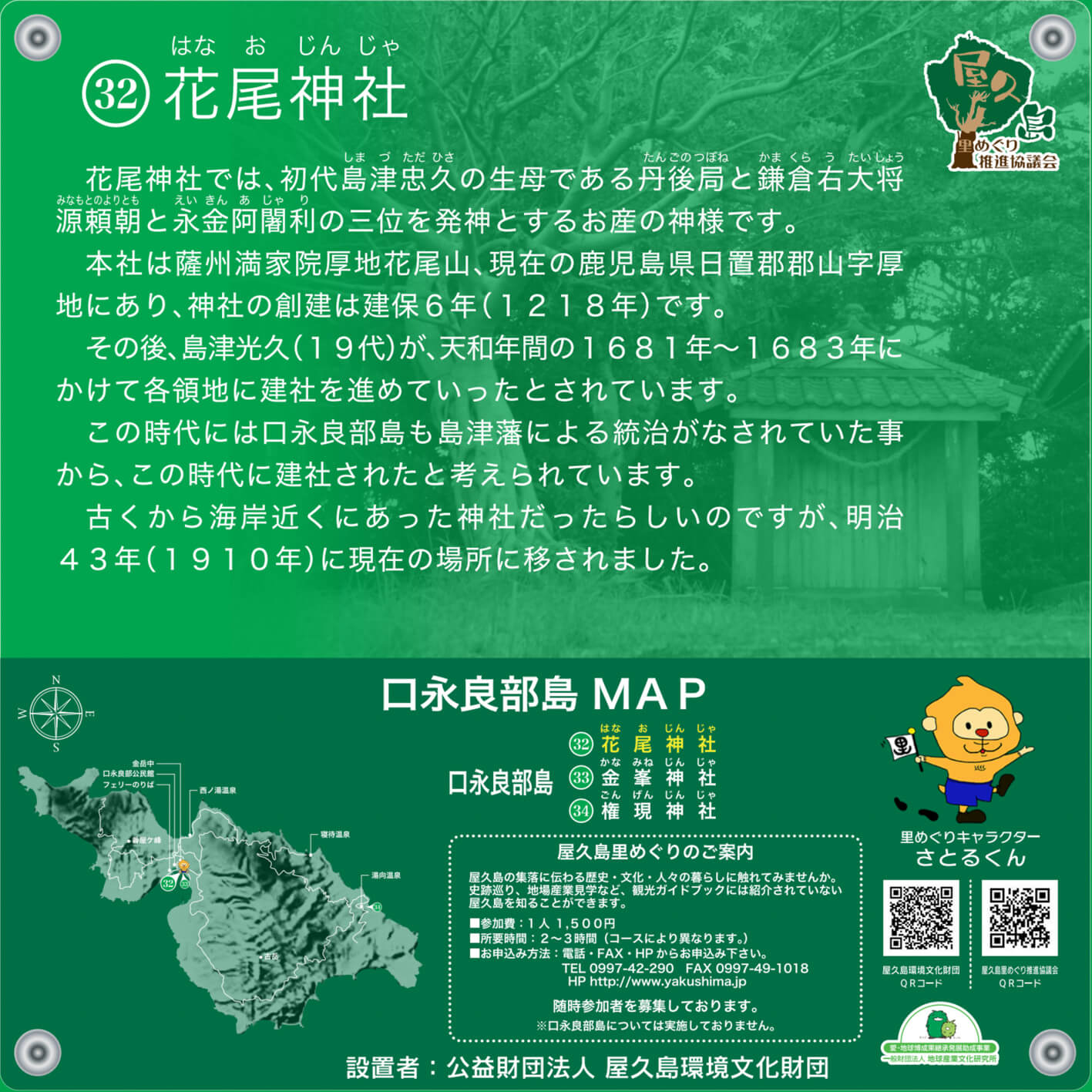
〒891-4205
鹿児島県熊毛郡屋久島町宮之浦823番地1
TEL:0997-42-2900
FAX:0997-49-1018
(屋久島環境文化村センター内)













